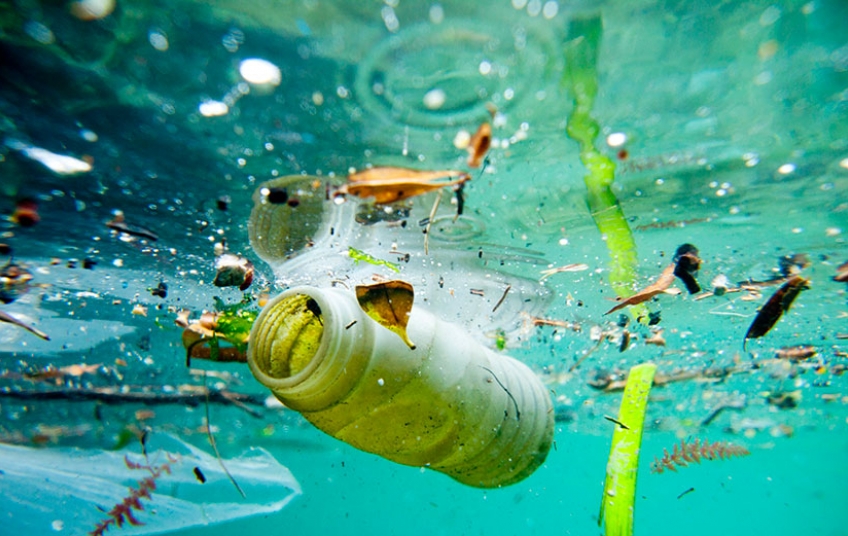The world of bioplastics has exploded in recent years and we need to keep it that way for years to come. Bioplastics are an important part of global sustainability. Plastics are vital to humanity and everyone’s daily lives. They are often an important lighter, stronger, safer replacement to many other materials. Plastics are used in virtually everything, including packaging. Most plastics are made from nonrenewable resources and are not biodegradable, lasting for hundreds of years. Bioplastic is an alternative way of making plastic using renewable resources rather than petroleum.
In 2001, The United States generated approximately 230 million tons of waste. That is roughly 4.4 pounds per person each day. Plastics account for nearly 11 percent of this waste, with plastic containers and packaging being the main source. That is more than 11 million tons of waste generated from plastic containers and packaging per year. When walking through the average supermarket, you can find plastic items everywhere that make our lives easier. Individually wrapped snacks, plastic bags to store items, soda bottles, disposable razors, diapers, and shampoo bottles are just a few. Even the bags we use to carry goods home in are often plastic. Where does that plastic end up? Plastic litter primarily ends up in dumps and landfills, which cause problems on its own. Even though plastics are not the main waste product entering these landfills, they are a clear contributor to them. If you have never been to a landfill or a dump, it is frightening to see the magnitude of this problem.
It also ends up littering our oceans and coastlines. Ingestion of plastic kills marine creatures and fish. We are destroying the home of millions of aquatic lives. More than 5 percent of the world output of plastic is now polluting our oceans. To us, these items are used to make our lives more convenient and, in some cases, are necessities. However, our environment and other forms of life are suffering in the process.
So, what are bioplastics? Bioplastics are derived from renewable sources and for the most part, under the right conditions, are biodegradable. They can be used to reduce the problem of plastic waste that is polluting the planet and contaminating the environment. Does it make any sense to continue using packaging that can take centuries to decompose just to pack products that will be consumed in a few days or months? Bioplastics are being made from many renewable materials and are taking the place of plastics being made from crude oil. Plastic is the third most commonly used petroleum consumer in the world. It has been estimated that 200,000 barrels of oil are used each day to make plastic packaging for the United States alone. This is the problem that needs to be addressed.
There will come a time when everyone will stop hurting the planet we live on by drilling holes for oil, producing a lot of greenhouse emissions, and using up our non-renewable resources, and start becoming sustainable. Even with something that may seem as simple as packaging products, we can help the Earth. Using plant-based packaging materials is not only helpful to the planet, but to the people on it as well.
Bioplastics are made using several new materials, such as starch, cellulose, and processes involving fermentation. Bioplastic development efforts have focused predominantly upon starch, which is a renewable and widely available raw material. It is also the one method that is most competitive with traditional petroleum methods. Even though bioplastic is a growing industry, they are currently accounting for less than half of one percent of all plastic manufactured. For a cleaner future, this number will have to increase substantially. Our generation’s carbon footprint depends on it.
Advantages of bioplastics
- Can replace many harmful conventional plastics
- Reduce carbon footprint
- Provide energy savings in production
- Do not involve the consumption of non-renewable raw materials
- Reduce non-biodegradable waste that contaminates the environment in their production
- Do not contain additives that are harmful to health, such as phthalates or bisphenol A
- Do not change the flavor or scent of the food contained
Disadvantages of bioplastics
- Can be difficult for consumers to discern which bioplastics are biodegradable
- Are not discarded properly
- Do not even have the facilities to sort or compost the bioplastics in most places
- Usually end up in a landfill anyway
References
Gendell, Adam. "It's time for bioplastics to be plastics." Packaging Digest. Packaging Digest, 10 Mar. 2017. Web. 17 Mar. 2017.
<http://www.packagingdigest.com/sustainable-packaging/its-time-for-bioplastics-to-be-plastics-2017-03-08>.
Lillian Llu. "Bioplastics in Food Packaging: ." Packaging Engineering. N.p., Feb. 06. Web. Mar. 17.
<https://www.iopp.org/files/public/SanJoseLiuCompetitionFeb06.pdf>.
"Bioplastics: an important component of global sustainability." Carbon Commentary. N.p., 02 Sept. 2011. Web. 17 Mar. 2017.
<https://www.carboncommentary.com/blog/2011/09/02/bioplastics-an-important-component-of-global-sustainability>.


































